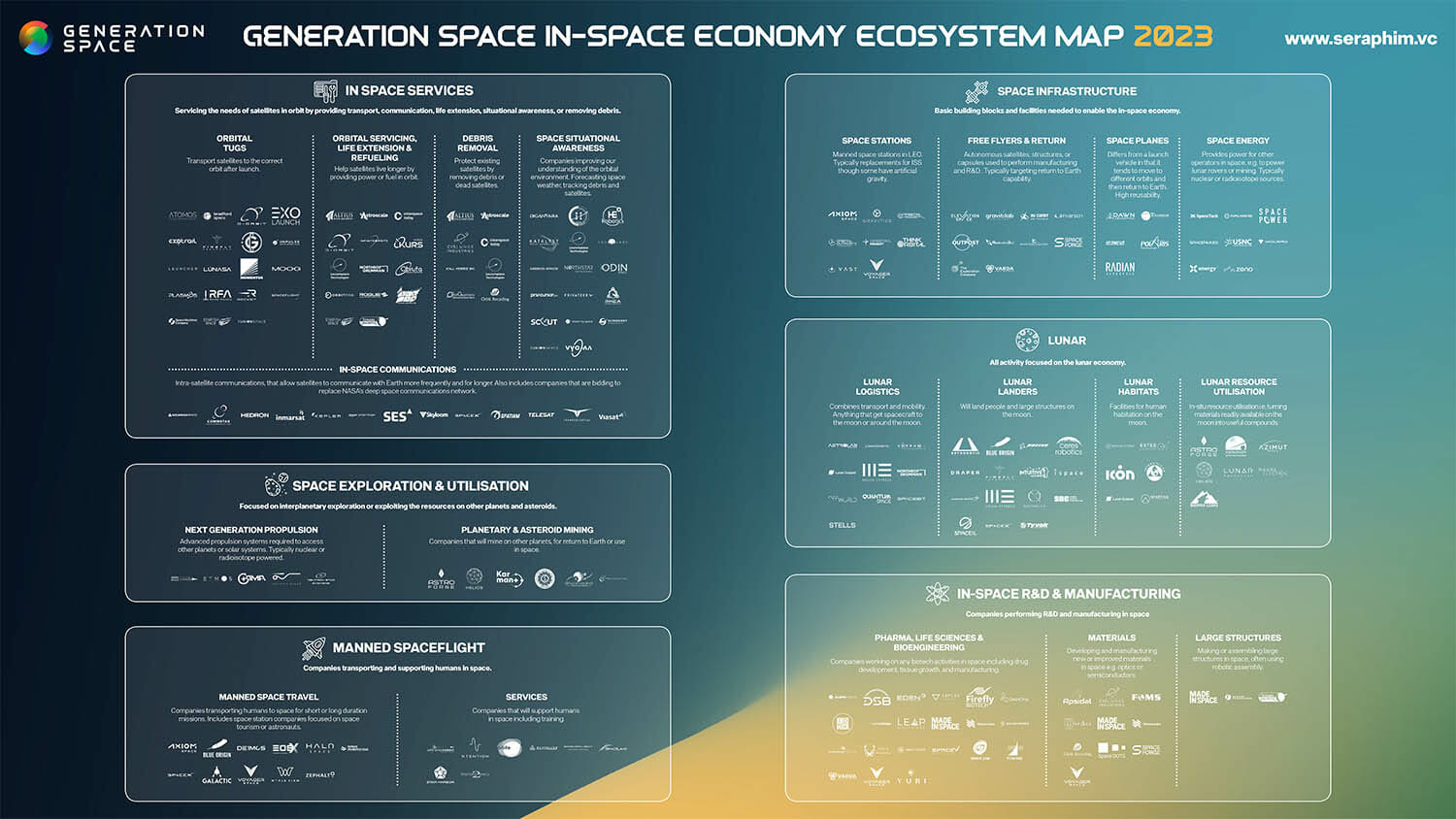In-Space Economy Ecosystem Map 2023

Today Seraphim Space has published its latest ecosystem report. The map provides a comprehensive look at over 250 companies across subsectors of the in-space economy, including both the most active and mature sectors and companies driving innovation. The report offers a snapshot of a rapidly growing and exciting industry, filled with opportunities for innovation and investment.
Q4 2022 hedge fund letters, conferences and more
The In-Space Economy
The key findings below include:
- A significant number of established companies are now operating in the in-space economy, covering transportation companies that can help transport, refuel and collect dead satellites, alongside companies improving our understanding of the orbital environment by forecasting space weather and tracking debris and satellites.
- The ecosystem identifies the “busiest markets”. In particular, Seraphim has seen significant growth in the In-Space Services market, with companies offering services such as orbital tugs, space debris removal, and in-space communications. This is driven by the explosion in the number of satellites launched, many of which will require ongoing support and maintenance. In-space communications feature almost every major GEO satellite operator or LEO constellation, as these companies aim to provide the replacement for NASA’s deep space communications system.
- The potential contracts in the in-space economy are now so large as to attract some of the largest and most established space companies. There is a high number of established companies or ‘primes’ in the space lunar, space infrastructure and space exploration markets in particular. For example, SpaceX, Boeing, and Sierra Nevada, but also primes such as Lockheed and Northrop are addressing orbital tugs, lunar landers, and space stations.
- R&D and manufacturing are now exciting areas. Start-ups plan to leverage the next generation of space stations and free flyers to conduct research and development in areas that will have a real impact on Earth. There are now a very large number of start-ups focused on life sciences to improve drug delivery, grow tissues and organs, and change patient care for the better.
Maureen Laverty, Vice President of Seraphim Space, said: “As the in-space economy takes off, major players in the industry are positioning themselves to capture a slice of the burgeoning market. From servicing the growing number of satellites in orbit to developing the lunar economy, and building the next generation of private space stations, opportunities for growth and innovation are manifold.
And it's not just about reaching for the stars, space life sciences are already making a tangible impact on Earth. Companies like Merck are leading the way in developing key technology, while startups are building on work conducted on the International Space Station to revolutionise tissue and organ growth, drug delivery, and protein crystallization. The possibilities are endless, and the potential for returns is astronomical.

Source valuewalk






